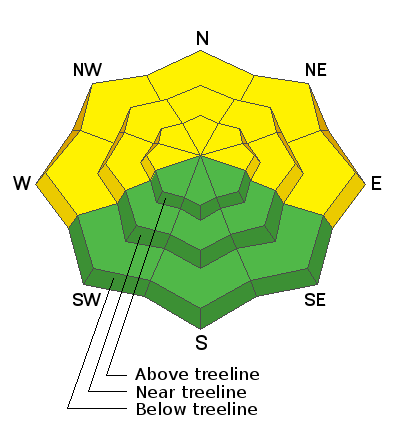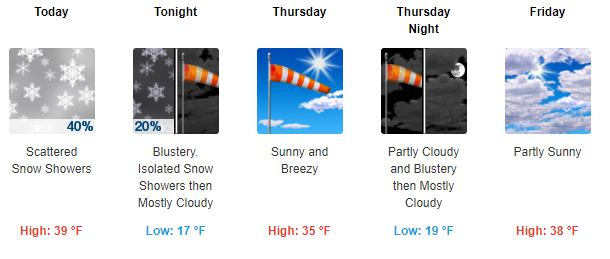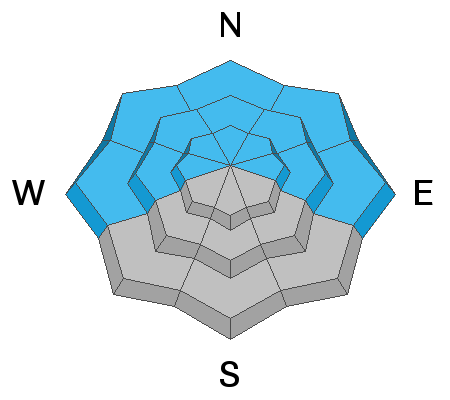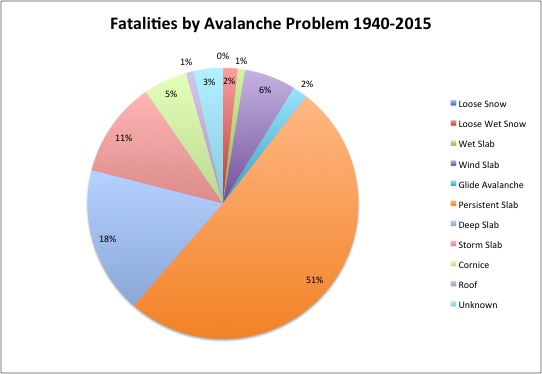A persistent weak layer of loose, sugary faceted snow exists on W-N-E aspects beneath a slab that is 2' -3' thick. This problem is most pronounced on slopes facing NW-N-NE-E near treeline and below and the weak layer is easy to locate with your shovel. In my travels the past couple days I have found shallow weak snow at the lowest elevation bands. I am still getting failures in my snow pits on shady aspects below treeline. Gain a little elevation and the pack gets deeper and gains some strength. Stability tests show the buried weak layer is getting harder to trigger, but if triggered can propagate and release a slab avalanche over two feet deep. Do I think there are places out there you can trigger this layer? YES. Will you see me skiing avalanche terrain on the North half of the compass? No. Above treeline the weak layer distribution is much more variable and it is hard to track. Attempting to outsmart this avalanche problem in the alpine is a dangerous proposition. Likely trigger points include areas of shallow snow, slope margins, rocky outcroppings, and steep convex roll overs. We are just over a week out from the storm and here's a few key things to keep in mind:
- Signs of instability will no longer be obvious
- You most likely will not experience cracking or collapsing at this point
- Ski tracks and snowmobile tracks are not an indication of stability. Avalanches failing on a buried persistent weak layer can take out multiple sets of tracks.
This graphic shows the correlation between avalanche accidents and the danger rating. Regardless of whether it is a rising or falling danger, most accidents occur during the transition between Considerable and Moderate danger.
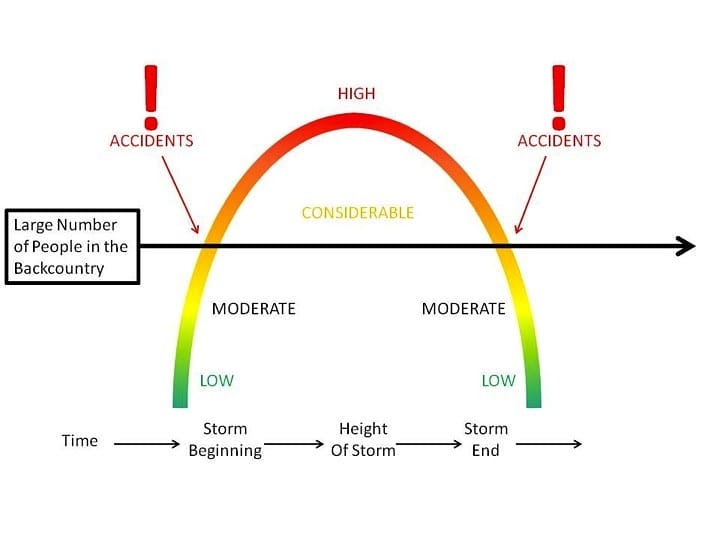
Avalanches failing on a buried persistent weak layer make up 51% of avalanche fatalities since 1940.

